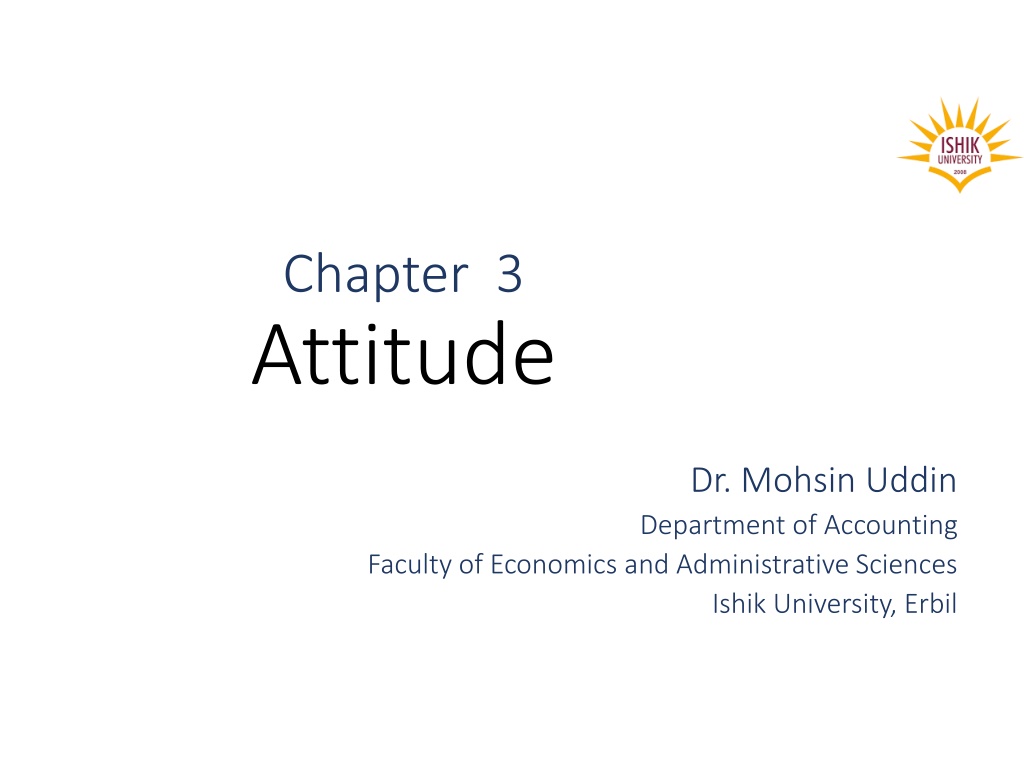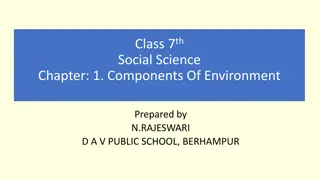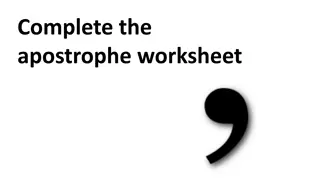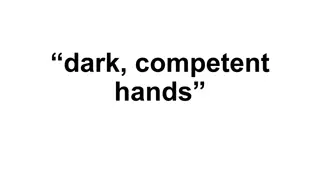Understanding Attitudes: Components and Impact on Life
Attitudes play a significant role in our perception and behavior towards people, objects, and situations. This content covers the definition of attitudes, their formation, components (cognitive, affective, behavioral), and the impact of a positive attitude on one's life. By understanding attitudes, individuals can enhance their self-awareness and interpersonal relationships, leading to personal growth and success.
Download Presentation

Please find below an Image/Link to download the presentation.
The content on the website is provided AS IS for your information and personal use only. It may not be sold, licensed, or shared on other websites without obtaining consent from the author. Download presentation by click this link. If you encounter any issues during the download, it is possible that the publisher has removed the file from their server.
E N D
Presentation Transcript
Chapter 3 Attitude Dr. Mohsin Uddin Department of Accounting Faculty of Economics and Administrative Sciences Ishik University, Erbil
Learning objectives After this class, you will be able to: Define attitudes; Components of Attitudes; Explain how attitudes are formed; and Describe the how to Change Attitudes
Attitudes are defined as our favourable or unfavourable evaluations of people, objects, and situations.
We communicate our attitudes in the form of statements such as: I like mangoes , I enjoy classical music , or I do not enjoy rock music . When we use words such as like , dislike , hate , good and bad we are describing our attitude towards objects, people or issues/events.
Attitude consists of three aspects i.e. cognitive, affective and behavioural Cognitive part It refers to the thinking that brings about the development of a belief about the attitude object. Affective part It refers to the direction (positive or negative feeling), intensity of a person s evaluation experienced towards the attitude object. Behavioural part It is the possibility of acting in a certain manner towards the attitude object. or the emotion
Components of Attitudes There are three basic components of Attitudes: Cognitive(Evaluation) component (what ?)(My pay is low) Affective (Feeling) component (how do you feel?)(How little I m paid) Behavioural(Action) component (a tendency to act in a certain way). ( I am going to look for another job)
Components of Attitude Make a list of the various aspects that you think, feel and act towards your best friend. Identify affective and components of attitudes. cognitive, behavioural the
Positive attitude Positive attitude leads to happiness and success and can change your whole life. It brings constructive changes in one s life.
How Much Do You See of an How Much Do You See of an ICEBERG ICEBERG? ?
How Much Do You See of an How Much Do You See of an ICEBERG ICEBERG? ? ONLY 10% OF ANY ICEBERG VISIBLE. IS THE 90% IS BELOW SEA LEVEL. REMAINING
How Much Do You See of an How Much Do You See of an ICEBERG ICEBERG? ? 10% VISIBLE ABOVE SEA LEVEL SEA LEVEL INVISIBLE BELOW SEA LEVEL 90%
How Much Do You See of an How Much Do You See of an ICEBERG ICEBERG? ? SKILLS & KNOWLEDGE KNOWN TO OTHERS SEA LEVEL UNKNOWN TO OTHERS ATTITUDE
BEHAVIOR KNOWN TO OTHERS SEA LEVEL UNKNOWN TO OTHERS IMPACT VALUES STANDARDS JUDGMENTS ATTITUDE MOTIVES ETHICS - BELIEFS
Stop Negative Assumptions They can t afford it. They ll never buy. They re a pain to work with. They re just looking for a good deal. They probably already know what they want. If I ask for referrals, customers will think I m pushy. They re cheap. 14
Make them Positive... They can afford it, if they want it. They will buy if I give them what they want. They have high standards. They want the best value for their money. I can help them discover what they want. If customers like me and my service, they ll be happy to give referrals! They will spend on things that are valuable to them. 15
ATTITUDES ARE EVALUATIVE STATEMENTS ATTITUDES ARE EVALUATIVE STATEMENTS Attitude reflect how one feels about something Ex. When someone says I like teaching he is expressing his attitude about his work
HOW ATTITUDE WORKS HOW ATTITUDE WORKS It is a cognitive and affective evaluation that predisposes a person to act in a certain way Cognitive Affective BEHAVIOUR
WHAT ARE THE SALIENT FEATURES WHAT ARE THE SALIENT FEATURES ABOUT AITUDES? ABOUT AITUDES? Attitudes are related to feelings and beliefs about people Attitude is a response to persons objects or events Attitudes affect behaviour positively or negatively Attitudes feel changes Attitudes affect perception, and in turn, behaviour
HOW ATTITUDES ARE FORMED HOW ATTITUDES ARE FORMED Attitudes are not inherited They are acquired or learned by people from the environment in which they interact
ROLE OF CULTURE IN ATTITUDE FORMATION Culture plays a definitive role in the formation of attitudes Ex- Sri lankans earn for future requirements Americans for that matter earn to enjoy the present
WHAT IS A POSITIVE ATTITUDE WHAT IS A POSITIVE ATTITUDE Attitude is the way you communicate your mood to others
ATTITUDE IS YOUR MENTAL FOCUS ON ATTITUDE IS YOUR MENTAL FOCUS ON THE OUTSIDE WORLD THE OUTSIDE WORLD Like using a camera you can focus or set your mind on what appeals to you You can see situations as either opportunities or failures Examples A hot summer day may be beautiful or ugly A departmental meeting is either interesting or boring
EMPHASIZING THE POSITIVE AND EMPHASIZING THE POSITIVE AND DIFFUSING THE NEGATIVE DIFFUSING THE NEGATIVE Emphasizing the positive and diffusing the negative is like using a magnifying glass You can place the glass over good news and feel better or you can magnify bad news and make yourself unhappy Magnifying situations can become a habit if you continually focus on difficult situations the result will be distortions of problems
WHAT CAN WE LEARN FORM THIS Think more about the positive things This means that you have learnt to alter your imagery to highlight the positive This means that you are on the right road
REMEMBER! ATTITUDE IS NEVER FIXED! IT IS AN ONGOING ACTIVE PROCESS
Challenge! Of course! No one can be positive all the time Excessive optimism is not realistic Positive attitude is not an act. It must be honest
HOW TO MEASURE ATTITUDES Self- Report Indirect tests Direct observation Techniques
HOW TO CHANGE ATTITUDES Filling in information Gap Resolving Differences Impact of peers The co-opting approach
Types of Attitudes Job Satisfaction A collection of positive or negative feelings that an individual holds toward his or her job. Job Involvement Identifying with the job, actively participating in it, and considering performance important to self-worth. Organizational Commitment Identifying with a particular organization and its goals, and wishing to maintain membership in the organization (Continuance and Commitment)
Measurement of Attitude Thurston Attitude Scale: Thurston attitude scale is comprised of questionnaires which are filled up by the employees. This method of attitude scaling is widely used for measurement of attitude. Interviews: Interview is the method of obtaining information about employees attitude towards organisation, job related conditions or other parameters. factors, working























